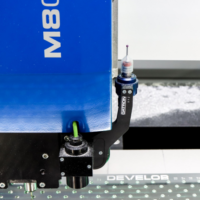 We’re honored to have a CAMWorks customer, Matt Moseman President of DEVELOP LLC, as our guest blogger to talk about his experience with HCL CAMWorks and how it has assisted his work.
We’re honored to have a CAMWorks customer, Matt Moseman President of DEVELOP LLC, as our guest blogger to talk about his experience with HCL CAMWorks and how it has assisted his work.
In the last blog post, we discussed why small businesses should utilize CAMWorks. In this post, we breakdown the key topics of the TechDB and automatic feature recognition.
For startups and small businesses alike, CAMWorks offers a myriad of benefits, specifically in reference to the Technology Database (TechDB) and Automated Feature Recognition (AFR). When compared to lights out machining, these two facets offer comparable value or greater. Although decision-makers in the manufacturing space are eager to automate 360° of their processes, incremental automations are key to making progress. Overall, it’s important for teams to identify which aspects of their production cycle can be automated to yield the highest ROI. The following blog post will focus on leveraging CAM automation for the purposes of reducing human error, clearly defining a strategy, and ultimately, scaling.
